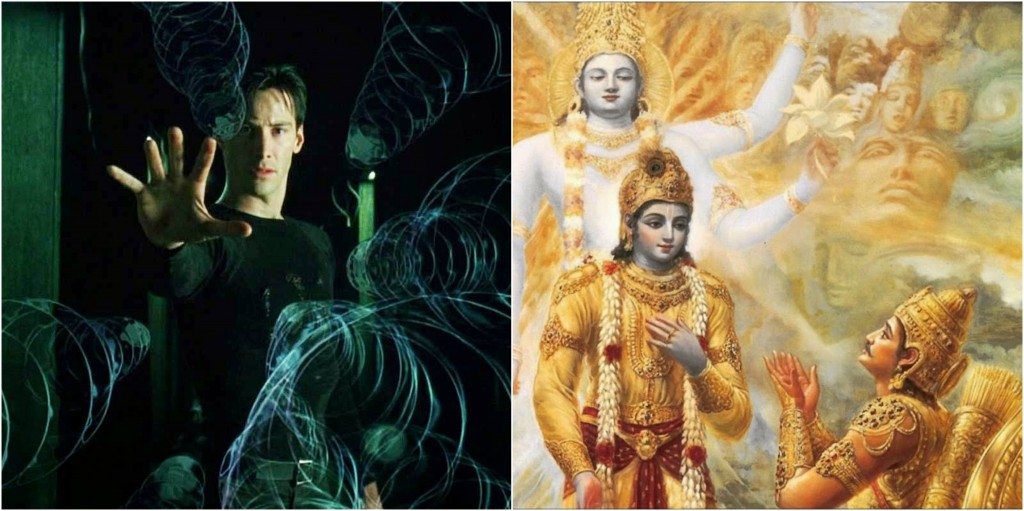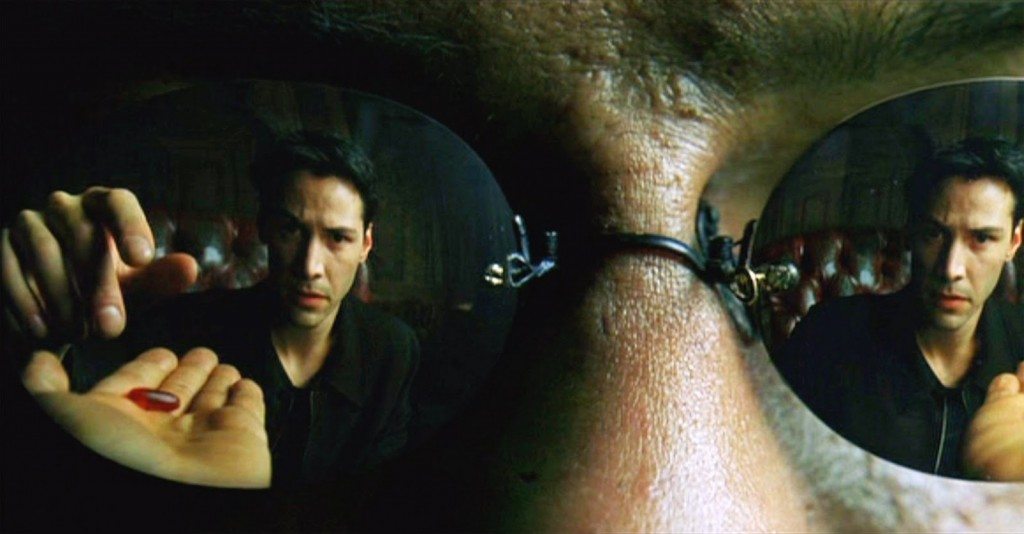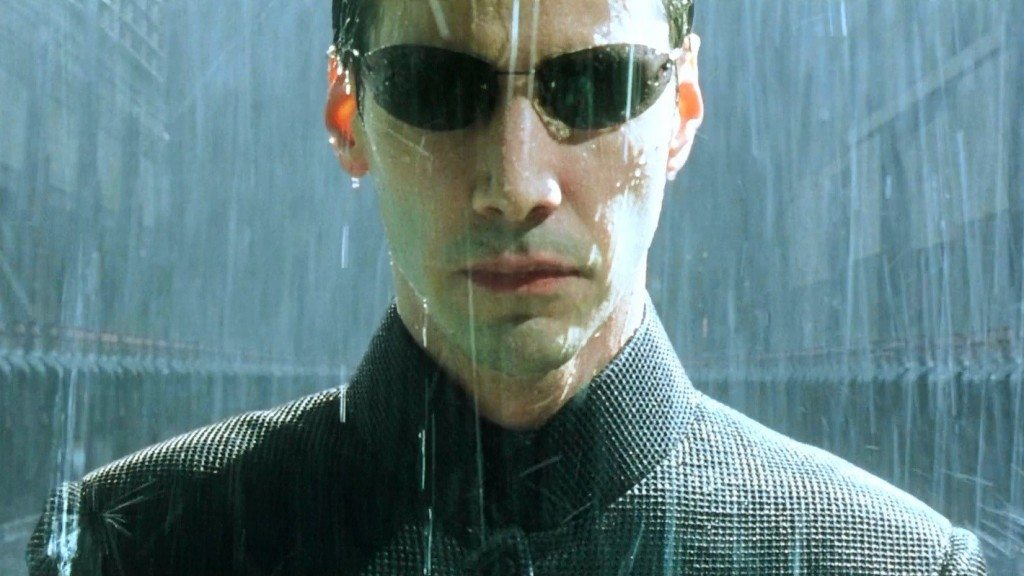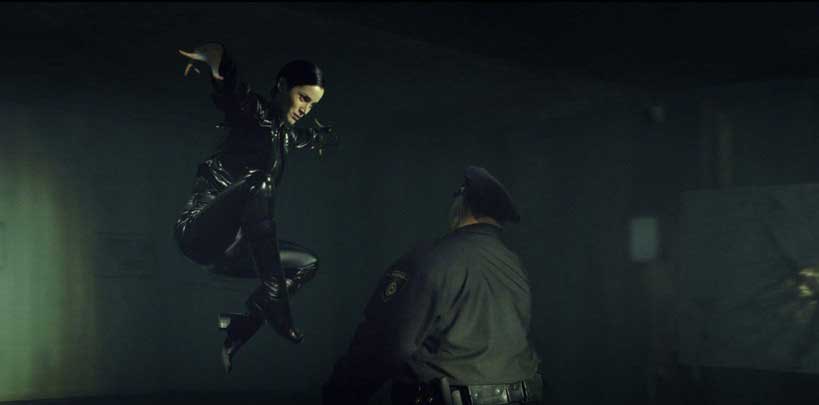It takes a lot for a movie to become a cultural phenomenon. It’s especially hard now because of the shortening of attention spans; everyone wants a quick dose of awesome, and then everyone forgets. A piece of art has to be something very special to achieve a cult status. Word of mouth helps, sure. But a film’s intrinsic ability to move the audience-to force them to think-plays a very important part. Inception achieved something similar six years ago. But “The Matrix” was the original “brain-twister”, the original “mind-blowing” piece of movie-making. The Matrix is the pinnacle of everything cool, in our opinion. The storytelling, the concept, and the themes; they all resonate with a wide-set of people. But this article is specifically dedicated to listing out the inspirations that the trilogy draws out from Hinduism.
“Matrix”, the world of illusion — or “maya”
When Neo is rescued by Morpheus and is shown what The Matrix really is, he rejects it and wants out. He refuses to believe that everything he had believed all this time was actually false and illusory. The experience is so intense for him that he throws up and falls unconscious.
When Neo and Morpheus meet, one of the first things Morpheus says is, “you look like a man who accepts what he sees because he’s expecting to wake up … this is not far from the truth.” A similar line comes a few minutes into this dialogue when Morpheus questions Neo, “if you had a dream that seemed so real, what if you were unable to wake from that dream, how would you know the difference between the real and the dream.”
This theme of distinguishing reality from illusion runs throughout the movie as the characters from the resistance constantly go in and out of the “Matrix”. It’s a theme that is constantly addressed in Bhagvada Gita. The Gita explains that we carry a false conception of ourselves because we identify with the physical body and aren’t able to see or experience the soul. As a person puts on new garments, giving up old ones, the soul similarly accepts new material bodies, giving up the old and useless ones.
The description that Morpheous gives to Neo about what is “Matrix” is pretty close to what Hindus believe as “Maya”.
Neo: What is the Matrix?
Morpheus: What is the Matrix? Control. The Matrix is a computer-generated dream world built to keep us under control in order to change a human being into this.
Various sacred Hindu texts have multiple different definitions of it, but popularly, it is believed to mean that the world is not as it seems; the world that one experiences is misleading as far as its true nature is concerned.
Neo and Arjuna
At the start of the film, Neo isn’t sure if the world he is living in is real or imaginary. The things happening around him are a surreal at best, and he starts to question his own place in the universe. It is a part and parcel of every “chosen one” theme for the hero to question, to be full of doubts, and it’s lifted straight from the Mahabharata, one of the oldest such narratives. It becomes all the more clear when the nature of “The Matrix” is revealed.
In the Kurukshetra battlefield, Arjuna is unable to decide whether he should take arms against his brothers. Another such dichotomy is presented before Neo; the red-pill/blue-pill scenario. It is essential here to understand that both moments offer a way out. However, it is not as simple as merely choosing one over the other. By taking the red-pill, Neo chooses to introduce a gargantuan set of new variables into his own existence, and is forced to make further choices along the path, some of which are not as explicitly binary. By choosing to not live inside a fabricated reality, he shapes his own, which is infinitely more complex than the Matrix. By going deep inside the rabbit hole, he understands how inconsequential his own existence is. And once you understand this, you can do anything.
This point is enforced by Morpheus at each crucial juncture. If you recall, there is a scene where Neo asks Morpheus, “When I am ready, will I be able to stop bullets?”
Morpheus responds: “When you’re ready, you won’t have to.”
This is such a quietly powerful scene which hammers the point home. “Being ready” doesn’t mean you can take on the world, becoming a warrior and a messiah. Being ready means that you’ve shed all the illusions that you were living under. Being ready means being free.
It’s open to argument who plays the role of Lord Krishna here. Morpheus certainly fits the bill. He’s full of advice for the young Neo, and knows “The Matrix” from the inside. The garb of the “charioteer” also fits him. But he, too, has his own doubts about the prophetic nature of events around him. And that is why, going deep into the subtext, I tend to think it’s the Oracle who has the answers, and is analogous to Lord Krishna. Her cryptic suggestions to Neo about existentialism and identity draw parallels to the original sermon.
Neo and Vishnu
Jumping to ‘The Matrix: Revolutions”, there is a point in the film where Architect says the following:
“I prefer counting from the emergence of one integral anomaly to the emergence of the next, in which case this is the sixth version.”
That basically means there have been five previous incarnations of Neo. This is similar to the Hindu god Vishnu who throughout history has assumed a certain shape or avatara.
Also, Neo is the hero prophesied to be ‘The One’, who would basically vanquish all evil and save the human race. Hindus believe that the final incarnation of Vishnu (The Preserver), Kalki would do similar stuff in the Kali Yuga (bringing balance to the force et al). He is effectively the harbinger in Hindu mythology.
Trinity and Durga
Unlike the majority of “orthodox” religions, Hinduism is populated with strong and powerful female deities. Durga, in Hindu mythology, is the goddess of defense, warfare, wisdom and knowledge. The goddess promised that she would arise and intervene each time the asuras (demons) returned to the world to resume the fighting in their efforts to revive the forces of evil in the cosmos. Trinity, the black leather wearing warrior, who can more than hold her own in battle, perhaps owes more to this tradition than any other.
There are more such parallels exist between the film and the Hindu mythology in general. However, the Wachowskis were reluctant to fully admit this influence. But if you had any doubts about that, just listen to the song below that plays near the closing credits of “The Matrix Revolutions” which seems to be directly inspired from the Upanishad mantra.
Finally, Hinduism isn’t the only religion that seems to have inspired ‘The Matrix’ trilogy. There are clear inspirations from other religions like Buddhism and Christianity too — many of these inspirations overlap across religions.






You must be logged in to post a comment.